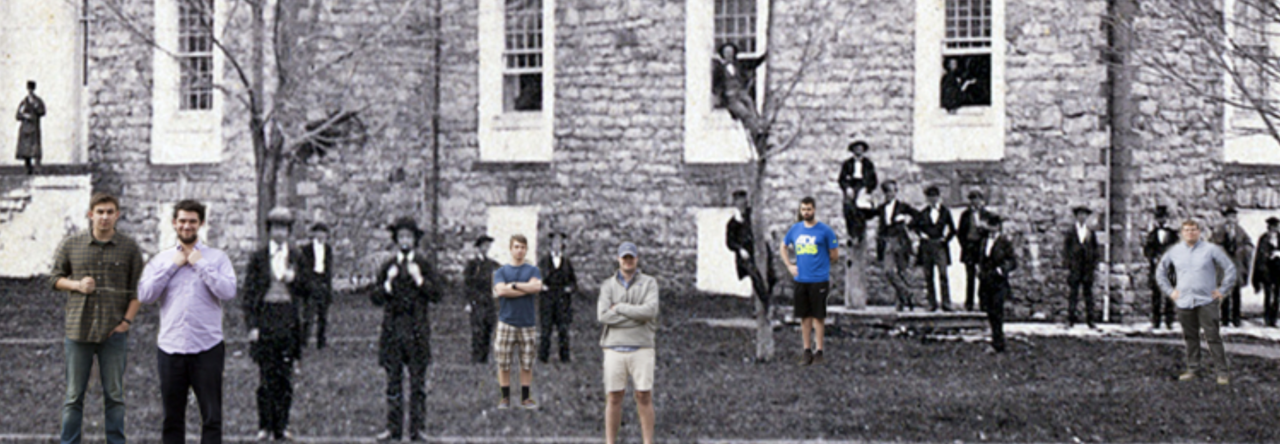 Who was living with Abraham Lincoln in 1860? The question is more complicated than it sounds. A quick check of the 1860 census (via a subscription database service such as Ancestry or Fold3) reveals that in addition to his wife (Mary, age 35) and three young boys (listed by the census taker as Robert T, 16, Willie W, 9, and Thomas, 7), there was also an eighteen-year-old female servant named M. Johnson and a young fourteen-year-old male named Phillip Dinkell.
Who was living with Abraham Lincoln in 1860? The question is more complicated than it sounds. A quick check of the 1860 census (via a subscription database service such as Ancestry or Fold3) reveals that in addition to his wife (Mary, age 35) and three young boys (listed by the census taker as Robert T, 16, Willie W, 9, and Thomas, 7), there was also an eighteen-year-old female servant named M. Johnson and a young fourteen-year-old male named Phillip Dinkell.
Other Lincoln scholars have identified the servant as Mary Johnson, an Irish immigrant, who helped Mary Lincoln around the house and with the boys. Mrs. Lincoln hired a series of young female, mostly Irish-born, domestic servants like Mary Johnson, during the 1840s and 1850s while the family was living in Springfield, Illinois. At the White House, the Lincoln relied on a wider range of servants –male, female, white and black– but the most important hired figure, at least in terms of the family’s life during that period was probably housekeeper Mary Ann Cuthbert.
There is a letter from Philip Dinkel’s brother (note spelling) in the Abraham Lincoln Papers at the Library of Congress. Private George J. Dinkel reported on May 28, 1864 that Philip was in Chicago studying to be a minister. Lincoln biographer Michael Burlingame includes a story in his work about Mary Lincoln allegedly berating Philip Dinkel, whom he describes as a “servant boy”: “she ordered a servant boy, Phillip Dinkel, ‘to get out, and threw his suit case out the window after him.’ However, this account is recollected, second-hand and at least some of the information in Burlingame’s footnote does not seem to be a match for this Philip Dinkel. The 1864 letter from brother George (not included in Burlingame’s materials) suggests that perhaps Philip was boarding at the Lincoln’s but was not a “servant,” and instead may have been more like a tutor. Burlingame’s indispensable multi-volume biography, by the way, is available freely online from the Lincoln Studies Center at Knox College. You can find his reference to Philip Dinkel with the supporting footnotes in the PDF for Volume 1, Chapter 6, ‘It would Just Kill Me to Marry Mary Todd’: Courtship and Marriage, (1840-42).” Here are the details from Burlingame’s footnote to the Dinkel story:
“Philip Dingle,” age five, appears in the 1850 census of Sangamon County. The 1860 census for Sangamon County lists Phillip Dinkell living in the Lincoln household as a servant. Military records show German-born Philip Dinkle, age 18, on the rolls of the Union Army in 1862-63. He died of consumption in 1865. Illinois State Journal (Springfield), 27 October 1865. His widowed mother, Barbara Dinkel, lived a block and a half from the Lincolns, on Edwards Street between Eighth and Ninth, according to the 1860-61 Springfield City Directory. Temple, Lincoln’s Home, 66.
Clearly, there’s more to find out about Lincoln’s neighbors, the Dinkels. And perhaps there’s even a paper to be written about a figure like Philip Dinkel….
For an update on the Dinkel family research, check out this short post.

Leave a Reply